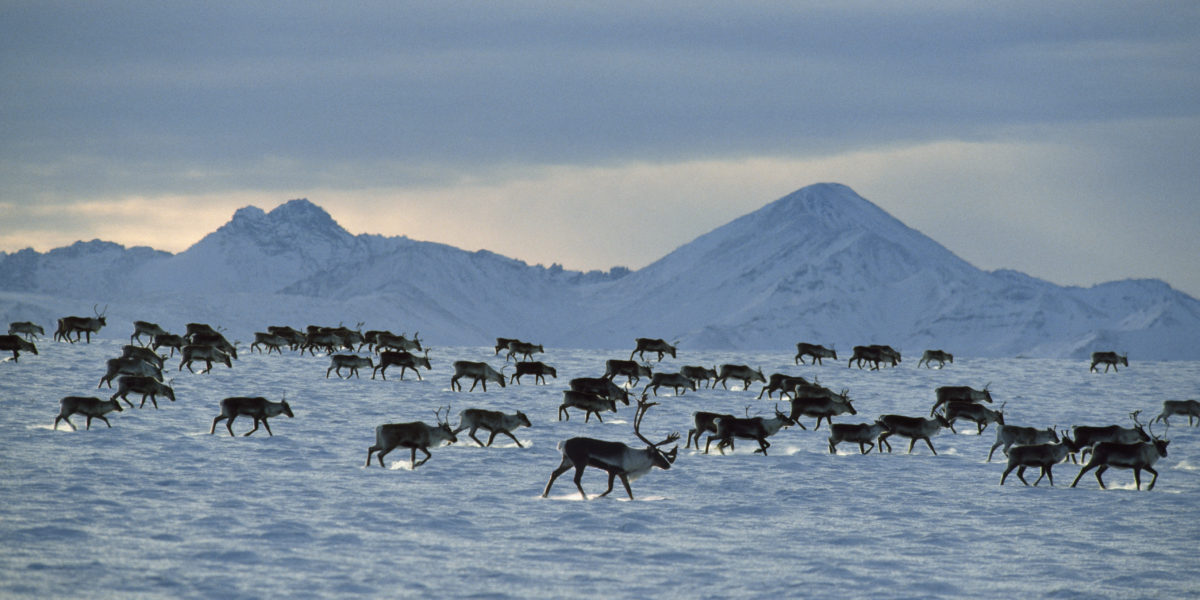
Trump Administration Approves Oil Drilling in Arctic National Wildlife Refuge
Environmentalists say drilling will cause severe damage to the region’s wildlife and climate.

Getty Images
Conservation efforts in Alaska were dealt a blow this week when the Trump administration signed off on an initiative that will open up the Arctic National Wildlife Refuge, an area about the size of South Carolina, for oil drilling and development.
Debates have swirled for decades over opening the 19 million-acre refuge, with conservation efforts citing the irreversible detriments oil development and construction would pose to regional wildlife, including herds of porcupine caribou, more than 200 species of birds, and an already dwindling number of polar bears.
Drilling would also threaten the Arctic’s fragile climate, environmentalists say, where temperatures rising twice as fast as the rest of the world are already thawing the region’s permafrost and upending the tundra’s ecosystem.
“Our climate is in crisis, oil prices are cratering, and major banks are pulling out of Arctic financing right and left,” Adam Kolton, executive director of the Alaska Wilderness League, said in a release. “This rush to drill would culminate in a fire sale of our nation’s most iconic wilderness.”
Interior Secretary David Bernhardt, meanwhile, told the Wall Street Journal that he has “a remarkable degree of confidence that this can be done in a way that is responsible, sustainable and environmentally benign.”
Bernhardt added that most of the drilling sites would be concentrated in northern sections that make up just 0.01 percent of the entire refuge. But that number, environmentalists note, does not include areas where above-ground pipelines would run.
Still, one positive for the conservation effort is that the bad optics of drilling in the region, along with the vast expanse of uninhabited land, could scare big oil companies or banks from sinking money into the project. Both Wells Fargo & Co. and Goldman Sachs Group Inc., for example, have already ruled out funding any drilling projects in the ANWR.
“Investors, with the energy companies, they don’t want a backlash from university endowments, sovereign-wealth funds and so on,” Quincy Krosby, Prudential Financial’s chief marketing strategist, told the WSJ.
“But, more importantly, I go back to the economic fundamentals: Why do you have to go there for oil? … The optics at this stage don’t bode well for this sort of endeavor.”
Drilling supporters include Sen. Lisa Murkowski (R., Alaska), who, after previously urging the Interior Department to open up the refuge for oil leasing to strengthen the state’s economy, celebrated this week’s decision.
“This is a capstone moment in our decadeslong push,” Murkowski said. “New opportunity…is needed both now, as Alaskans navigate incredibly challenging times, and well into the future as we seek a lasting economic foundation for our state.”
Murkowski’s sentiments were echoed by Alaska’s Gov. Mike Dunleavy (R), who credited the decision as one that will create jobs and opportunity. State representatives also cited potential economic benefits for the Iñupiat, about 6,000 Alaskan Natives who live within the refuge.
“Nobody does projects like oil development better than Alaska,” Dunleavy said. “We watch out for the environment better than any place on the face of the Earth.”
Environmental assurances from Dunleavy and Murkowski offer little more than lip service, however, for those who have dedicated their lives to protecting the refuge.
“Make no mistake. The American people will not stand for the liquidation of our nation’s most iconic wilderness,” Kolton said. “We will continue to fight this at every turn, in the courts, in Congress and in the corporate boardrooms.”
Those interested in taking action to protect the refuge from intrusion can learn more about the Trump administration’s decision here, as well as its potential impacts on the environment and measures being taken to preserve one of the last untouched lands in the world.
